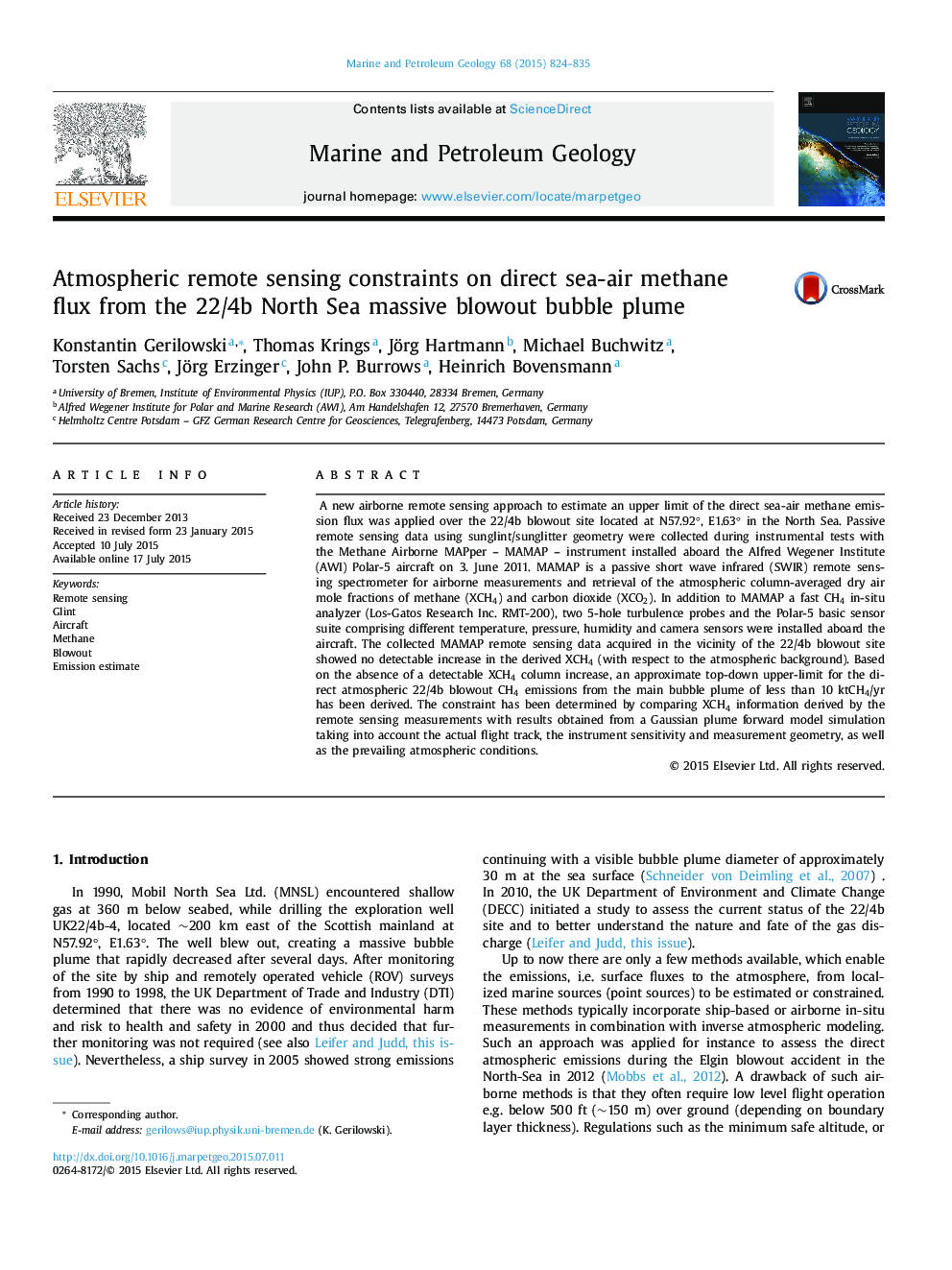| Article ID | Journal | Published Year | Pages | File Type |
|---|---|---|---|---|
| 6434863 | Marine and Petroleum Geology | 2015 | 12 Pages |
â¢A new remote sensing approach for estimating direct atmospheric CH4 emissions from offshore blowout accidents.â¢A new upper limit estimate of the direct atmospheric CH4 emissions from the 22/4b blowout site to below 10 ktCH4/y.â¢Airborne short wave infrared (SWIR) atmospheric CH4 remote sensing in solar glint direction over the ocean.
A new airborne remote sensing approach to estimate an upper limit of the direct sea-air methane emission flux was applied over the 22/4b blowout site located at N57.92°, E1.63° in the North Sea. Passive remote sensing data using sunglint/sunglitter geometry were collected during instrumental tests with the Methane Airborne MAPper - MAMAP - instrument installed aboard the Alfred Wegener Institute (AWI) Polar-5 aircraft on 3. June 2011. MAMAP is a passive short wave infrared (SWIR) remote sensing spectrometer for airborne measurements and retrieval of the atmospheric column-averaged dry air mole fractions of methane (XCH4) and carbon dioxide (XCO2). In addition to MAMAP a fast CH4 in-situ analyzer (Los-Gatos Research Inc. RMT-200), two 5-hole turbulence probes and the Polar-5 basic sensor suite comprising different temperature, pressure, humidity and camera sensors were installed aboard the aircraft. The collected MAMAP remote sensing data acquired in the vicinity of the 22/4b blowout site showed no detectable increase in the derived XCH4 (with respect to the atmospheric background). Based on the absence of a detectable XCH4 column increase, an approximate top-down upper-limit for the direct atmospheric 22/4b blowout CH4 emissions from the main bubble plume of less than 10 ktCH4/yr has been derived. The constraint has been determined by comparing XCH4 information derived by the remote sensing measurements with results obtained from a Gaussian plume forward model simulation taking into account the actual flight track, the instrument sensitivity and measurement geometry, as well as the prevailing atmospheric conditions.
